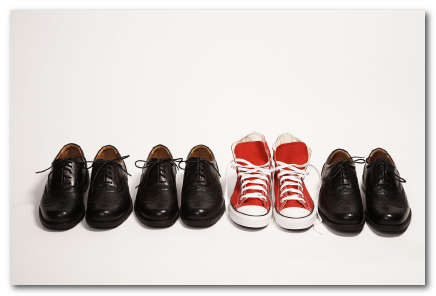
If your competitors offer a similar, or identical product to your own, here are a few ideas on how to change your offer, without really changing anything!
This strategy also works well if you feel your offering is getting a little stale could use a kick-start.
Positioning In The Sales Funnel
Where, in the sales funnel, are you currently pitching?
Try shuffling the positioning either earlier or later.
For example, a landing page might provide a lot of information, targeting people who are at an early research stage of the sales cycle.
However, what happens if the advertiser were to focus on price points and/or shipping options instead i.e. targets the end of the sales cycle? Does this result in more buyers? Or try the other way around. Provide more information, and focus less on the price, to try and woo buyers who are still researching?
The sales funnel is a continuum. The buyer could be anywhere along it. It can be a good idea to run slightly different campaigns targeting people at different points along the funnel, and not just leaving it to the path structure of your website.
You could also try presenting your product with a different image, or in a different context.
For example, a holiday package could be presented as “an escape”, or “an indulgence”, “a learning adventure”, “part of a lifestyle”, or as “something earned”. Each message requires a different approach, as each message engages with different types of buyers.
Breakouts
The breakout involves taking one feature of the product, and making it central.
For example, let’s say someone sells used iPads. They bundle the ipads with an attractive case, but haven’t, in the past, drawn attention to this point. They could try creating an ad that focuses attention on the case, as opposed to just the ipad, reasoning that potential customers already know what an ipad is, but they’re looking for a point of difference. Breakout items can include accessories, service contracts, and guides.
Bundling
If you sell multiple parts, which you sell individually, try bundling them together.
For example, someone could sell individual BBQ implements, such as a scraper, a knife, a large fork, an apron, a burger flipper, carry case, etc, or they could bundle them together into a “BBQ Kit”. Sometimes, individual items can be rolled into an attractive concept, making them easier to sell.
A variation of this approach is often used in traditional collectible mail order. They sell individual model cars, yet show a display case full of the complete set. Buy one each week, and the target is to fill the free display case. At that point, it becomes “a collection”.
Reintroduction
Don’t assume the customer knows everything about the product.
Again, using the iPad example, this could be pitched to a different market by describing it as “a small computer”. Think boaties, small apartment dwellers, motor-home owners, and anyone else pushed for space. The “small” feature is emphasized and dramatized in order to appeal to a sub-market within the computer buying market who are motivated by space saving.
This type of positioning also works well for the small business. A small company may not be able to provide the same benefits a large company can, but they can provide different benefits i.e. more agile, more personal, more customizable more approachable. These aspects are emphasized. The small companies prices may be higher, but again, they can spin this into a positive i.e. “we are there for people who appreciate quality, not quantity”.
Notice how the products aren’t really changed, they are just repositioned, bundled, or described differently to appeal to different markets, or to add a fresh angle.
Further Resources
- Product Positioning – Quick MBA
- Sales Funnel – Wikipedia
- Market Research – a collection of market research reports. Whilst these aren’t free, they may provide a shortcut to testing.
- Why Small Is The New Big – Seth Godin



